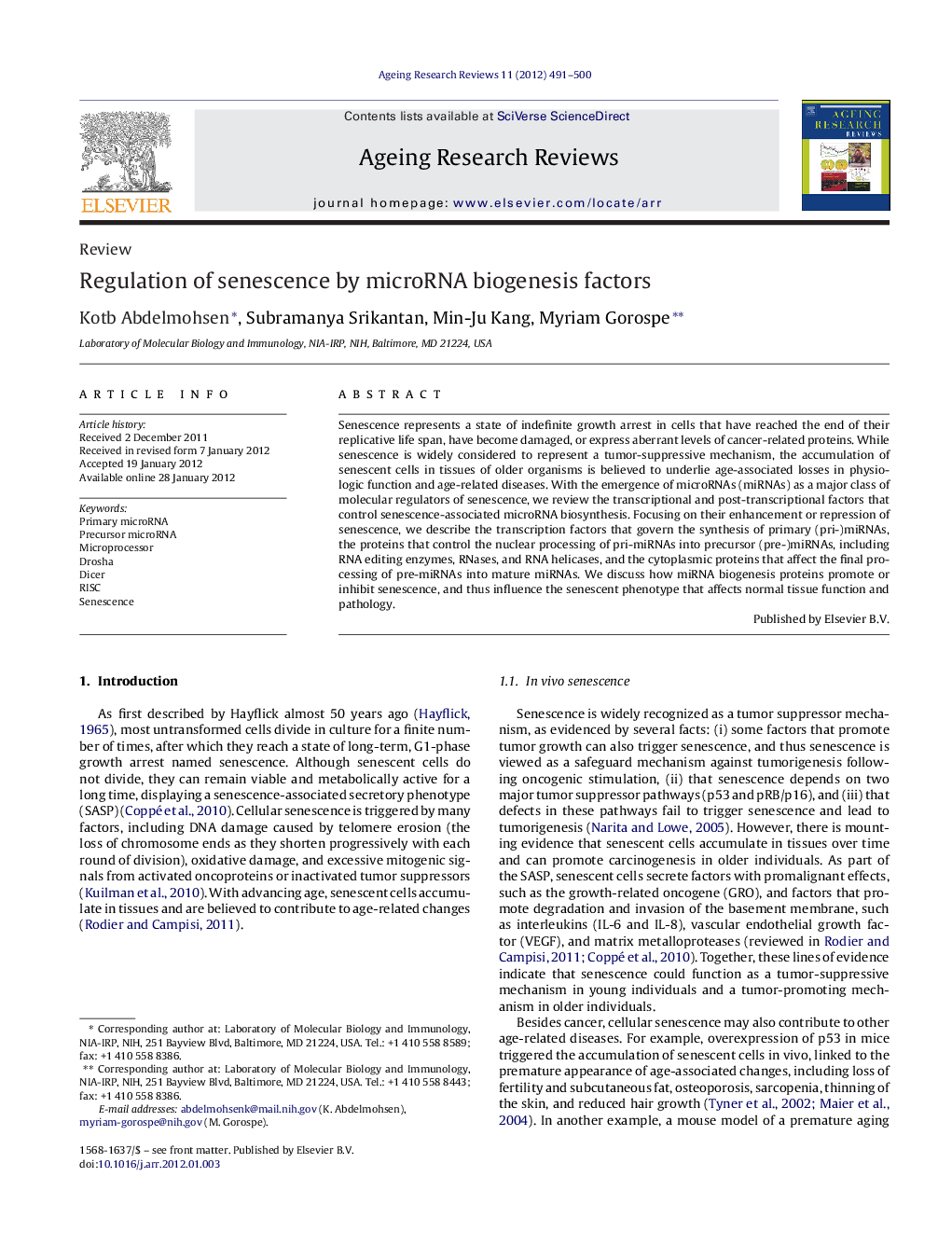| Article ID | Journal | Published Year | Pages | File Type |
|---|---|---|---|---|
| 1902284 | Ageing Research Reviews | 2012 | 10 Pages |
Senescence represents a state of indefinite growth arrest in cells that have reached the end of their replicative life span, have become damaged, or express aberrant levels of cancer-related proteins. While senescence is widely considered to represent a tumor-suppressive mechanism, the accumulation of senescent cells in tissues of older organisms is believed to underlie age-associated losses in physiologic function and age-related diseases. With the emergence of microRNAs (miRNAs) as a major class of molecular regulators of senescence, we review the transcriptional and post-transcriptional factors that control senescence-associated microRNA biosynthesis. Focusing on their enhancement or repression of senescence, we describe the transcription factors that govern the synthesis of primary (pri-)miRNAs, the proteins that control the nuclear processing of pri-miRNAs into precursor (pre-)miRNAs, including RNA editing enzymes, RNases, and RNA helicases, and the cytoplasmic proteins that affect the final processing of pre-miRNAs into mature miRNAs. We discuss how miRNA biogenesis proteins promote or inhibit senescence, and thus influence the senescent phenotype that affects normal tissue function and pathology.
► MicroRNAs (miRNAs) play a pivotal role in cellular senescence. ► MiRNA biosynthesis is tightly regulated during senescence. ► Senescence modulates the transcription factors expressing primary (pri-)miRNAs. ► Senescence affects the nuclear processing of pri-miRNAs to precursor (pre-)miRNAs. ► Senescence influences the cytoplasmic processing of pre-miRNAs to mature miRNAs.
